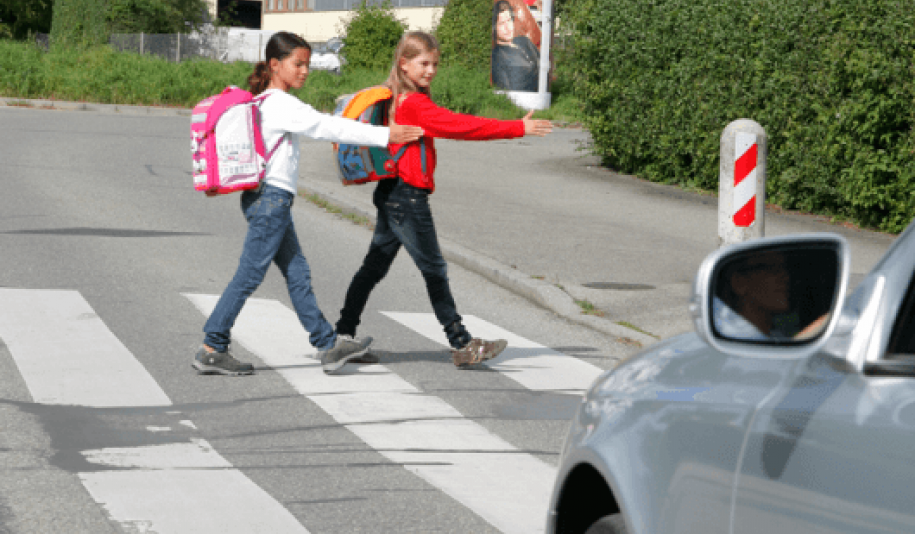Many primary school children walk to school. Even after the school bell rings and without the accompaniment of an adult, the little ones are constantly expanding their range - be it on the way to their friend's house or the football club. In order for these activities to run smoothly, it is important that children develop an anticipatory awareness of danger.
Why children should practice crossing the street
Children should practise crossing the road in particular, because they need to know the traffic rules and have to keep an eye on other road users. We want to encourage children to participate independently in road traffic and to master these important situations perfectly. With the right preparation, getting to the other side of the street goes smoothly, whether at a traffic island, visual obstruction or traffic light. By the way, the number of traffic lights in Germany is roughly based on the number of inhabitants. According to a rule of thumb, there should be one traffic light in German cities for every 1000 people.
Challenges for children
Children have a different view of the world. Especially when crossing the road, this characteristic poses challenges for them: due to their height, they have a different view of traffic than adults and are more easily overlooked. In addition, the little ones have to practise first how to judge the speed and distance of approaching road users.
In addition, perception training is an aspect that parents should consider when preparing for road traffic and crossing the road. A trained sense of sight and hearing helps children to grasp events that are not directly in their field of vision. Spatial vision develops in children until the age of nine and is only fully receptive from then on. These skills together enable proper crossing of the road.
There are several ways to cross the road. You can find out what the little ones should look out for in each case in our "Five-point-guide". For each of the crossing options, we present a plan that you can use on your next walk.






